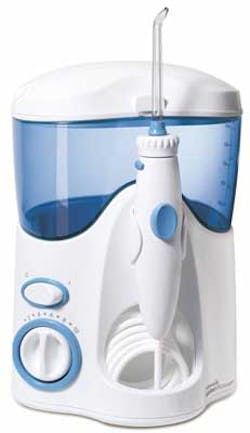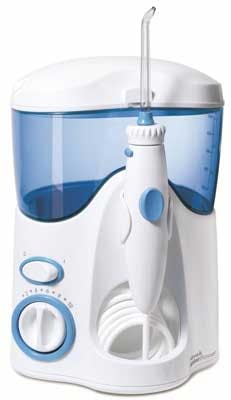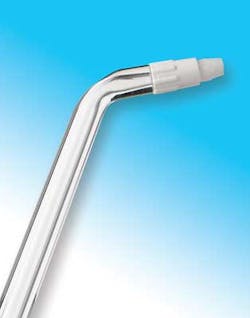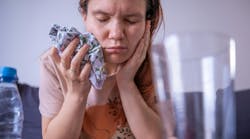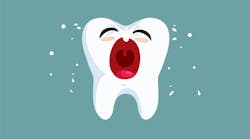Helping your most challenging patients improve their oral hygiene
The situation is not uncommon — an adolescent or teen patient with terrible oral hygiene. With plaque and debris everywhere, you try some toothbrush reinstruction only to be told “it hurts too much," or "it bleeds when I brush.” It feels like that age-old dilemma: you can either go forward and brush away the plaque and make them uncomfortable, or you can leave it and worry about the damage it’s doing to the tissue and the teeth.
There is a third alternative — a water flosser. (Fig. 1) What your orthodontic patient needs is a way to gently soothe the tissue and start the healing process. A water flosser can do just that. By starting out at the lowest pressure setting and using warm water and the jet tip, the pulsating action of the device will provide a gentle, lavage action to tender tissue, while at the same time flushing out food and debris. (see video below) Every day or two, there can be a slight increase in pressure. The goal should be for the patient to reach the medium pressure setting, at minimum, and to switch to a tip with a tapered brush designed specifically for orthodontic appliances.
Fig. 1: Waterpik® Ultra Water Flosser, Water Pik, Inc., Fort Collins, CO, USA
Additional reading |The role of the dental hygienist in orthodontics
This is going to do a couple of important things for your patient. One, the tissue is going to start heal and become less sensitive. This will allow your patient to brush more effectively, or add a power toothbrush. Secondly, once your adolescent has used the water flosser on medium pressure for about two weeks, there should be a significant reduction in both bleeding and gingivitis.
Additional reading |Motivating teens to better oral care through the use of dental technology
Once the patient is back on track, encourage him or her to continue to use the water flosser. Not only will it be able to flush out food and debris in areas nearly inaccessible to other self-care devices, it will reduce plaque and keep gingivitis at bay. A study of adolescents with fixed orthodontic appliances compared the use of the water flosser with an orthodontic-specific tip (Fig. 2) to string floss with a floss threader. Both groups used a manual toothbrush. Those who used the water flosser removed three times as much plaque as those who used string floss and five times as much as those who only used a toothbrush. (see video below) The water flosser users also had a better reduction in bleeding, 26% better than floss, and 53% better than brushing alone.(1)
Fig. 2: Orthodontic Tip by Water Pik, Inc., Fort Collins, CO, USA
VIDEO: The cleansing action of the Orthodontic Tip
Water flossers can help orthodontic patients flush out food and debris in areas nearly inaccessible to other self-care devices, reducing plaque and keeping gingivitis at bay.
Adding a sonic-powered toothbrush may also be of benefit to the orthodontic patient. While not studied specifically on orthodontic patients, one study did find that the water flosser paired with a sonic-powered toothbrush was 70% better at reducing bleeding than a sonic toothbrush alone and 159% better than a manual toothbrush alone. The duo was also significantly better than both the sonic and manual brushes at reducing gingivitis and plaque.(2)
When oral hygiene is optimal, it can make a good result great. Great results make for happy patients (and Moms), and happy patients generate referrals.
References
1. Sharma NC et al. Effect of a dental water jet with orthodontic tip on plaque and bleeding in adolescent patients with fixed orthodontic appliances. Am J Orthod Dentofacial Orthop 2008;133:565–571.
2. Sharma NC et al. Comparison of two power interdental cleaning devices on the reduction of gingivitis. J Clin Dent 2012;23:22–26.
